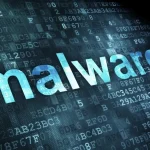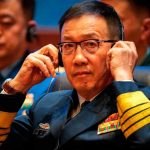But health workers were barred from speaking to anyone about the looming crisis, and the hospital wouldn’t even let them wear masks, the doctor claimed. “Everyone knew it was human-to-human transmission, even a fool would know. So why say there was none? This made us very confused and very angry.”The doctor said that, within weeks, there were hundreds or thousands of suspected cases but they were unable to report a diagnosis within the hospital structure. Just 41 cases had been officially reported by that time.Previously, reporting had suggested that Beijing leaders were aware of a likely pandemic for at least six days while telling the public there was little risk, before it eventually warned of human-to-human transmission on January 20.
Authorities were also accused of preventing the release of genomic sequencing results for several days, until professor Zhang Yongzhen published his online, against strict orders.American virologist Ian Lipkin told the BBC he was contacted by the head of the Chinese Centres for Disease Control and Prevention (CDC), George Gao, around the new year, as rumours of the virus began to circulate. Lipkin said Gao told him they had identified the virus and it was not highly transmissible.The documentary also looks at the response of the World Health Organisation (WHO), which continued to publicly stand by China’s assertion that there was no evidence of human-to-human transmission even while experts internally believed otherwise and were telling world leaders to prepare.
NED-2545-How-long-covid-virus-can-survive
Leaked audio from inside WHO meetings revealed WHO officials discussing the similarity of the situation with the SARS outbreak and “endlessly trying to get updates from China”, and the danger of “finger pointing” if something were to happen.“[To say] there is no evidence of human-to-human transmission is not good enough. We need to see the data, we need to be able to determine for ourselves the geographic distribution, the timeline, all of that,” WHO’s emergencies head Michael Ryan said at one early January meeting.The following day, WHO officials again praised China’s response.
It comes as a team of WHO experts arrived in China this week to investigate the pandemic and how it became transmissible to humans.The trip, which has long been hampered by delays from China, has begun what could be a long process to piece together the virus’s origin and how to prevent similar — or even worse — future outbreaks.But the world will be watching the results of the investigation — and China’s willingness to co-operate will also be the focus of intense interest around the world.That the trip is happening more than a year after the virus was first identified has stoked concern that the government has not been transparent in its handling of the virus. And political quarrels have emerged, particularly between China and the United States, with the Trump administration blaming China for the pandemic.
And while the focus is squarely on science, WHO’s experts also know they will be navigating a political minefield.“The objective of the investigation is not to designate a guilty country or authority,” said Yanzhong Huang, a senior fellow for global health at the Council on Foreign Relations told NBC News in the US. “But we also have to be realistic: This is a very politicised world, and if the research suggests China is the origin point of the outbreak, that hypothetical finding could indeed be used as smoking gun evidence to support claims that China is guilty.”
Powered by WPeMatico






